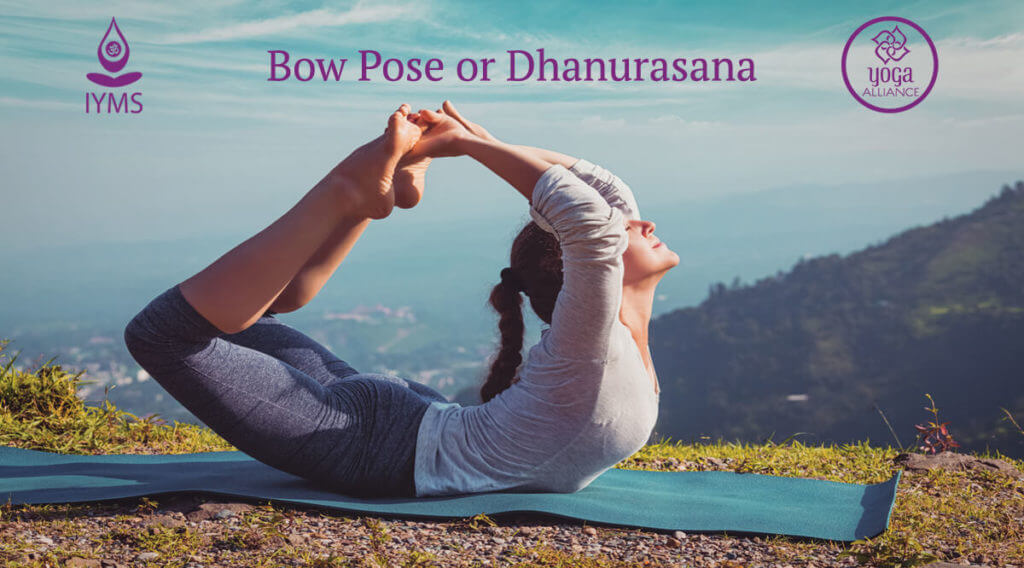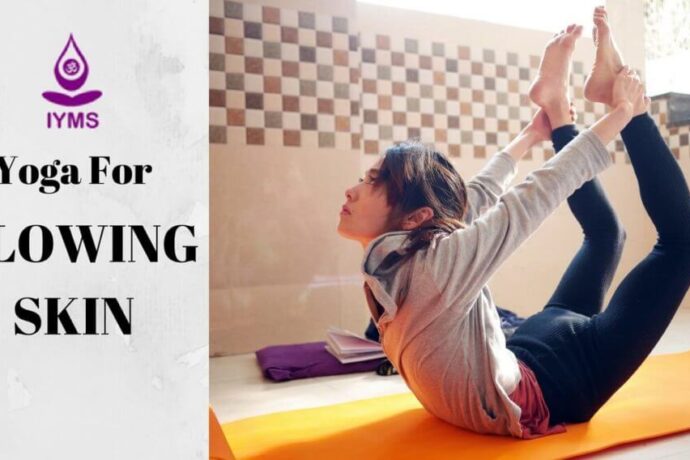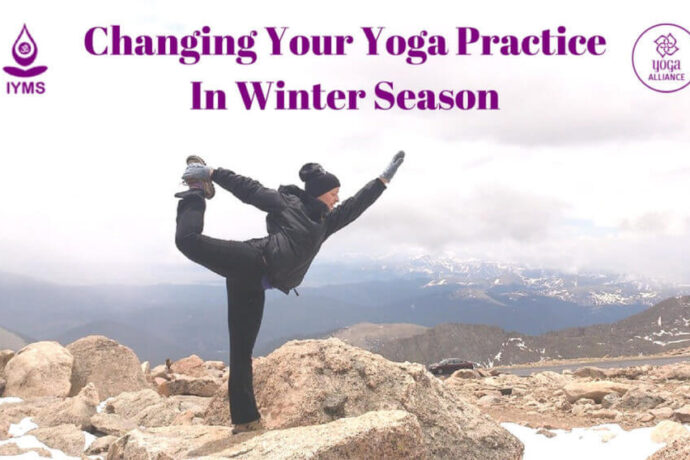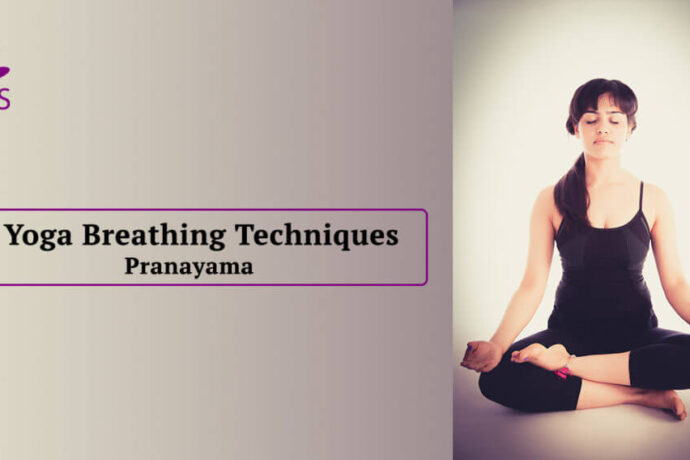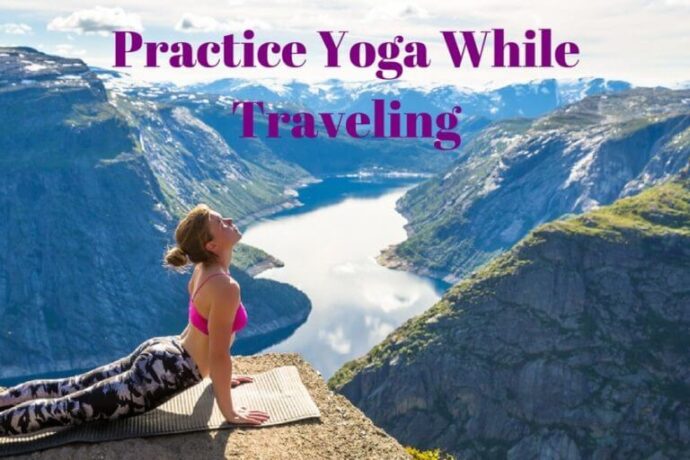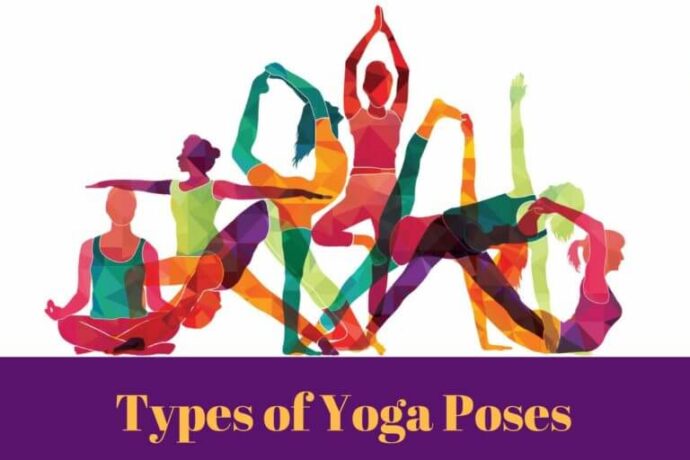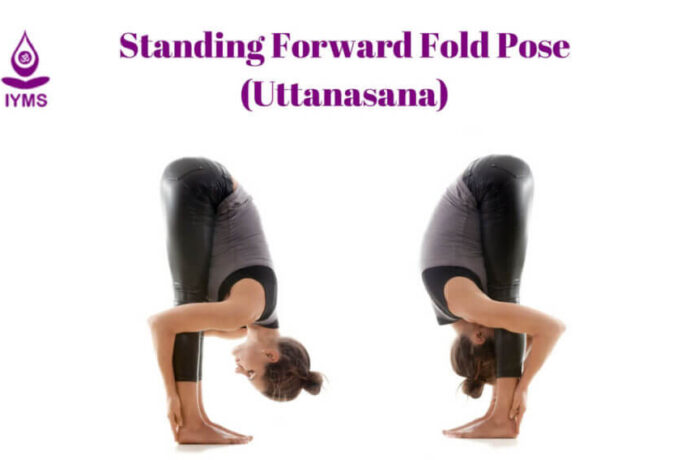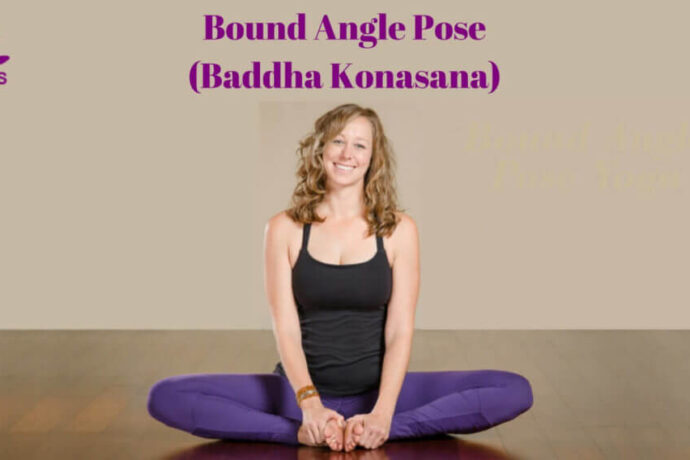When doing bow pose or dhanurasana, your body takes the shape of a stretched archer’s bow, the hands acting as the string of the bow and the arched body representing the bow. The name is the amalgamation of two words, ‘Dhanur’ which means the bow and ‘Asana’, meaning the pose.
The bow pose is a great backbend and chest opener. It is one of the 12 basic poses of the Hatha style of yoga. It is a great way to energize and provide balance to the body.
Pose Information
- Yoga Pose English Name: Bow Pose
- Sanskrit Name: Dhanurasana
- Pose Level: Beginners
- Pose Type: Backbend
- Strengthens: Vertebral Column and Back
- Stretches: Thorax, Lungs, Abdomen, Thigh, Ankle, Groin and Psoas Muscles
Preparatory Poses
- Cobra Pose or Bhujangasana
- Upward Facing Dog Pose or Urdhva Mukha Svanasana
- Locust Pose or Salabhasana
- Bridge Pose or Setu Bandha Sarvangasana
- Reclined Hero Pose or Supta Virasana
Follow-up Poses
- Upward Facing Dog Pose or Urdhva Mukha Svanasana
- Wheel Pose or Urdhva Dhanurasana
- Camel Pose or Ustrasana
- Fish Pose or Matsyasana
How to do Bow Pose or Dhanurasana?
The bow pose steps below will guide you through the entire flow so that you can perform the pose correctly.
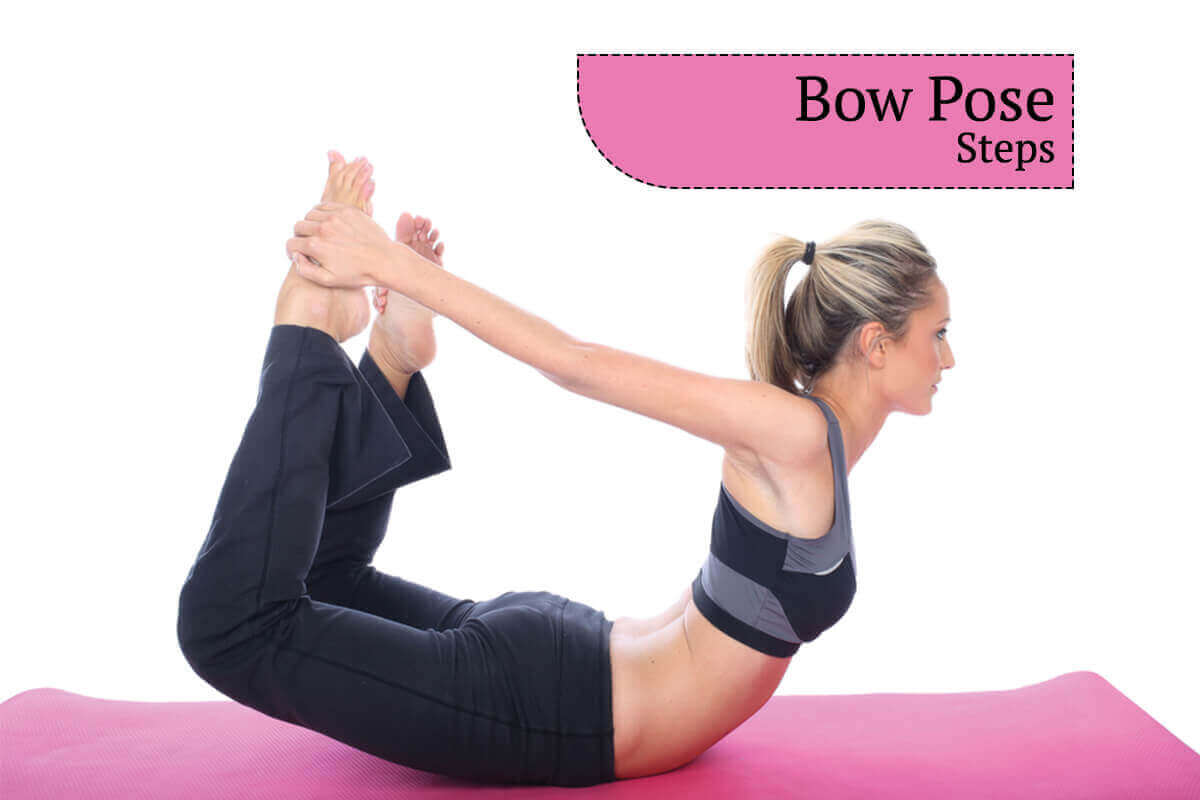
Step 1
To start with the dhanurasana, lie flat on the mat over your chest. Keep your hands by your sides with palms facing towards the sky. Ensure that your feet are hip-width apart.
Step 2
As you breathe out, bend your knees trying to bring your feet as close as possible to your buttocks. Reach your hands back and try to grasp your ankles with them.
Step 3
With hands in place, breathe in and strongly lift your heels away from your buttocks, while lifting your thighs off the floor. By doing so, your upper body and head lift off the floor too. Push your tailbone inwards while keeping your back relaxed.
You might find difficulty in breathing since your torso is pressed against the floor, so try to breathe into the back of your torso. Keep your breathing as normal as possible.
Hold the pose for 10-15 seconds.
Step 4
Release the pose when you breathe out by slowly bringing your upper body and thighs down till your knees are touching the floor.
Let go of your ankles, and position your hands back on the sides, relaxing your chest and head on the mat, and lengthening your legs outwards.
Bow Pose Common Misalignments
Alignment is the most important factor to focus on when doing any yoga pose. If your alignment, while doing the asana, is incorrect you might end up injuring your back. Being able to find the right alignment helps you reap the maximum benefits of the asana.
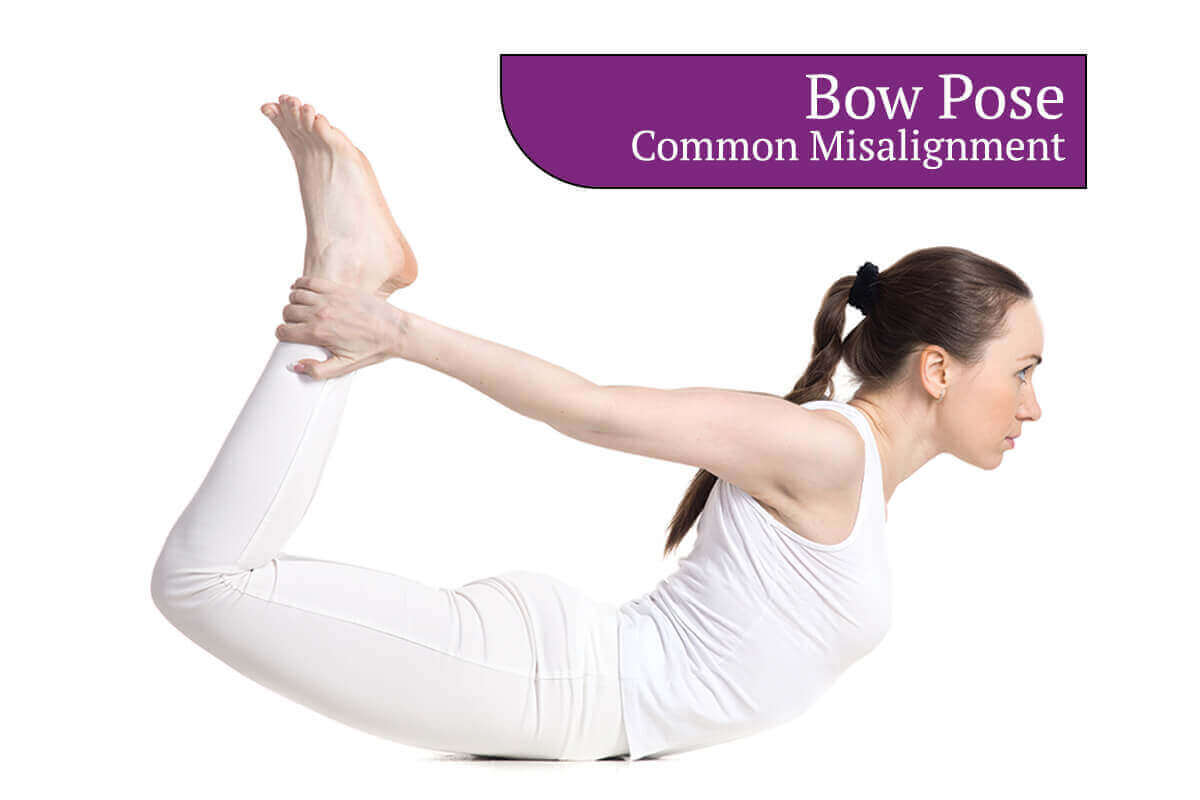
Here are some common misalignments and bow pose mistakes that come up during practice and that you need to take care of.
1. Wrong Hand Grip
Be mindful of how you grip your feet when doing the dhanurasana. You must ensure that you are grabbing your ankles and not the top of your feet. This will ensure a firmer grip and posture during the practice.
2. Flared Knees
The most common misalignment that yoga practitioners make when doing bow pose is spreading out their knees outwards as they pull it upwards to their buttocks. Your knees must always be hip-width apart and to ensure that the knees do not spread out, you can wrap your thighs around with a strap at hip-width or use a block between the knees.
Press the block in between the knees as you raise your feet up to maintain the distance between both knees. After some time when your body gets used to this you can remove the blocks and practice on your own.
3. Tension in the Lower Back
As mentioned earlier, your back must be relaxed while doing the Dhanurasana. Therefore, your back needs to be warmed up properly. Do poses like the backbend and the forward fold to get a proper warmup and not to avoid any injury.
Bow Pose Benefits
The backbend involved in doing bow pose gives your body several benefits both health wise and physically.
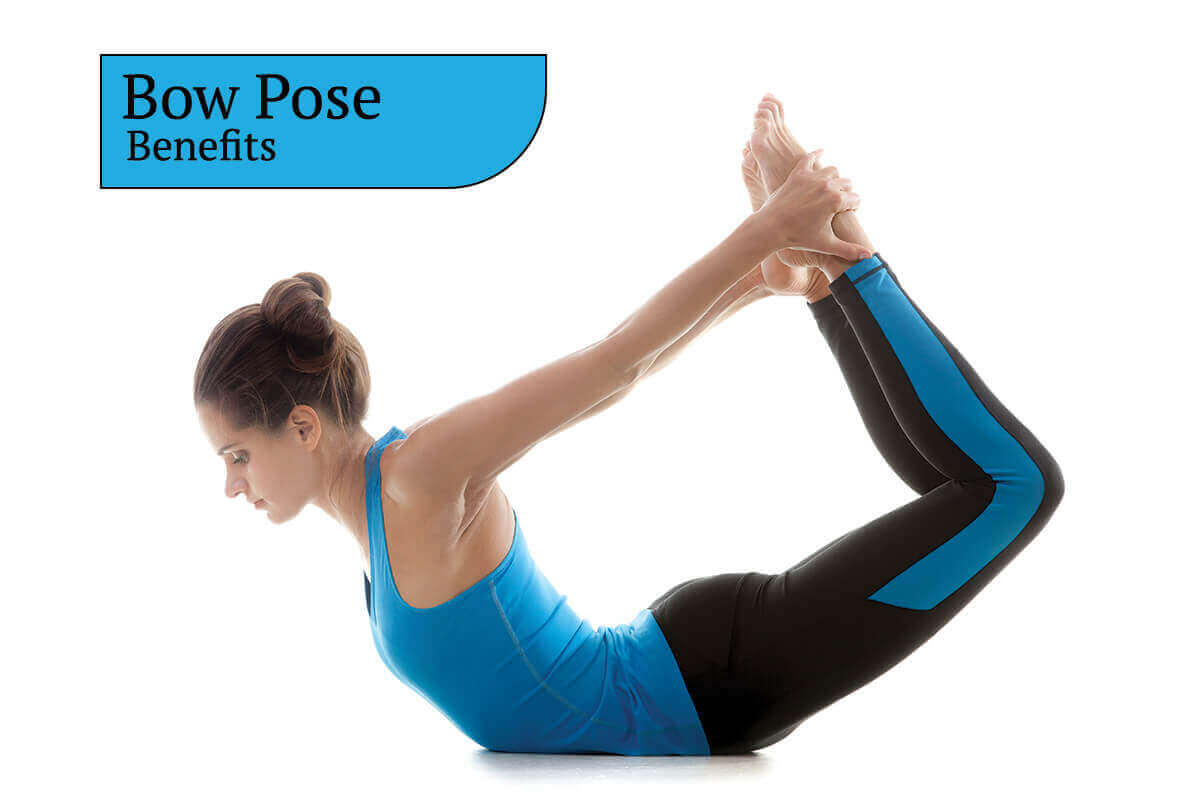
Here are some of the benefits that you can reap from doing dhanurasana.
- It helps in fighting obesity by providing maximum stretch on the abdominal area. Performing this asana regularly helps in removing any excess fat from the body and toning the entire body.
- Dhanurasana helps in enhancing the function of pancreas. It regulates the secretion of glucagon and insulin that can balance the sugar content in your blood. The pose can benefit patients with Type 1 and Type 2 diabetes.
- Bow pose helps in improving the digestive system by giving internal organs a gentle massage via the stretch done during the asana.
- Regular practice of this yoga pose helps in recovering any back problems you might have by giving your spinal column the ligaments, muscles, and nerves a good stretch during the practice.
- The pose also helps in relieving you of any stiffness that you might be experiencing with your back. In simpler words, the back becomes more flexible.
- It is good for circulation of blood to the heart.
- The stretch given to the arms while grabbing your ankles to pull up your thighs and upper body makes your arms and shoulders strong.
- Since this is a chest opening pose, it helps in alleviating any problems that are related to the respiratory organs like asthma or shortness of breath.
Bow Pose Precautions
Like all other yoga poses, bow pose must also be done with precautions. Some of them that you must remember are as follows.
- If you have heart problems, do not try and practice the pose as it may aggravate the situation
- People with hernia must not try this asana.
- If you have a lower back or neck injury, then avoid the pose.
- People with insomnia must not do the dhanurasana.
- People with blood pressure problems, recent surgery in the abdomen, or peptic ulcer must not do this yoga pose.
- The pose is a complete no-go area for pregnant women as it stresses on the abdominal area most.
Bow Pose Modifications
Bow pose can be difficult for beginners to overcome, especially while having to do the stretch or when having to grab the ankles. So, to get into the pose as a beginner, you can take the assistance of props, which can enhance your reach and stretch.
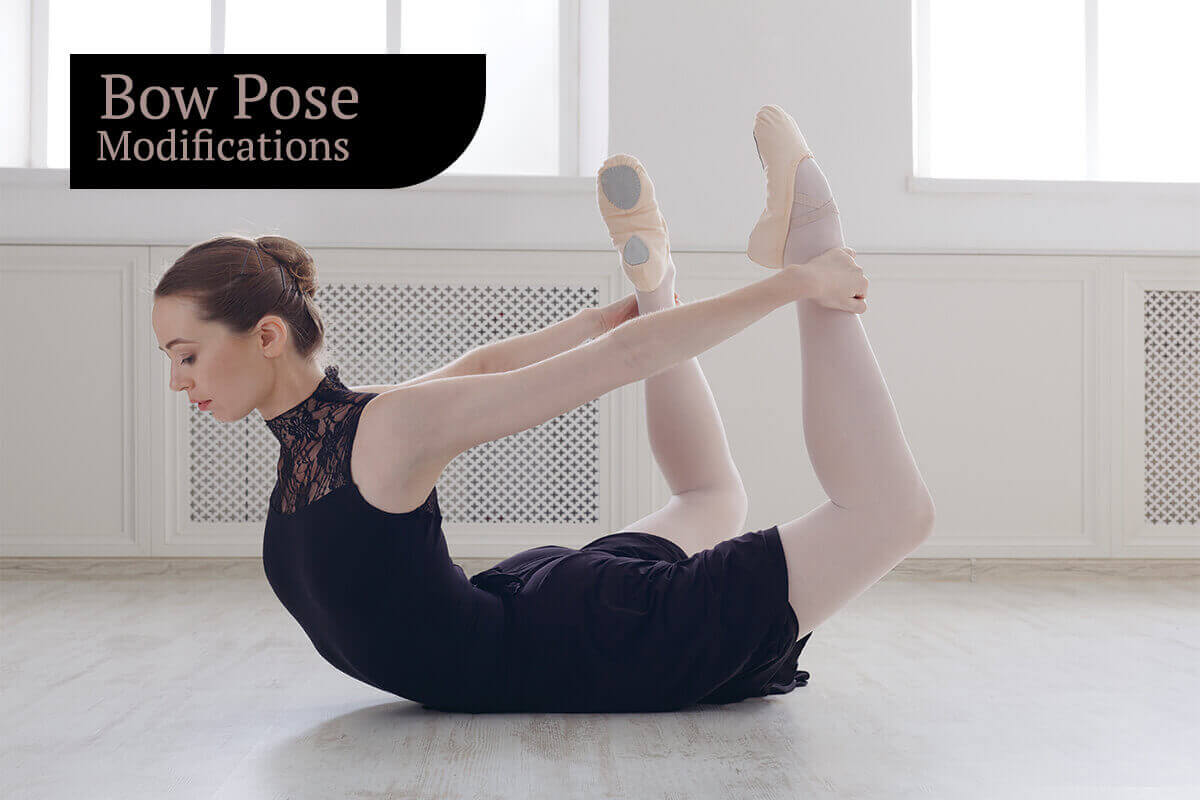
Modifications, in any type of asana, help you to avoid injury and perform the pose with ease. Modified techniques are a requirement, especially for beginners, to reap its advantages to the fullest. Here are a few modifications that you can try.
- You can practice bow pose with straps to reach your ankles if your hands do not reach there
Wrap the middle of the straps around the joint of your feet and hold the ends with your hands. As you get ready to do the pose, pull up your feet towards your buttocks as much as you can with the help of the straps.
- If the weight of your body at abdomen makes you uncomfortable, you can use a blanket or place a bolster in front of you for support in carrying out the exercise.
- You can use bolsters or blanket under your thighs to enhance the stretch of the legs.
- Use blocks for gauging the gap between the knees. The gap should be hip-width apart.
- If the yoga mat that you are practicing on feels hard and uncomfortable to use, you could start with the exercise on a mattress, with a softer and cushion surface.
- Do warm up asanas for loosening your muscles and warming your spine. This way you will avoid cramps.
Bow Pose Variations
1. Half Bow Pose (Ardha Dhanurasana)
To do half-bow pose follow the instructions below.
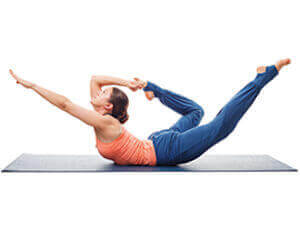
- Lay on your yoga mat over your chest with your chin resting on floor.
- Slide your right arm in front of you, over the head. Keep the palms planted on the floor.
- Now bend your right knee and try grasping its ankle with the left hand.
- Once you can grasp the ankle, with an inhale pull it up such that your right thigh, chest and chin are all lifted off the floor. Keep your right hand pressed to the floor for support.
- Breathe normally and hold the pose for 6-7 breaths
- Release the pose upon exhale and come back to the starting position gently. Relax for 5 seconds and repeat on the other side.
2. Side Bow Pose (Parshva Dhanurasana)
This is another variation of the bow pose and here is how you do it.
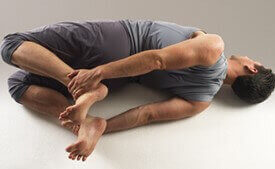
- Again, start by lying flat on your belly, on yoga mat.
- Follow all the steps for dhanurasana and form bow pose.
- Begin rocking sideways such that your body rests on one side of the floor. Here your body will rest on your sides rather than the belly region. While doing so do not let go of the Bow Pose.
- Stay in the pose for 10 breathes, exhale and come back to the starting dhanurasana pose.
- Stay in Dhanurasana for 5 breaths and roll to the other side
- Again, stay in the position for another 10 breathes before returning to shanurasana and releasing.
This variation of the bow pose is for experts, so beginners should not try it without the permission of their yoga teacher.
3. Standing Bow Pose (Dandyamana Dhanurasana)
This variation is different from all other dhanurasana variations because it is done while standing position rather than lying flat on the floor. Here are the steps for you to practice this asana.
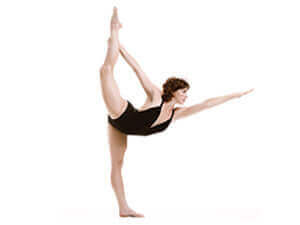
- Stand in the middle of your mat in Tadasana, facing forward to one of the longer edges.
- Keep your hands to the side.
- Inhale and raise your right hand above your forehead, palms facing forward and bend your left knee.
- Now, hold your left ankle with your left hand.
- Now push your left leg back as you bend upper body from the hips up, forward. Ensure that your right-hand lowers along with your body but remains straight.
- Keep your gaze forward.
- Stop when you reach a point when you cannot bend anymore. Hold the position for 10 breathes. Breathe normally.
- To release, slowly straighten your body again, till you reach the starting phase.
- Come back to Tadasana and relax for 10 seconds. Repeat with the other side.
This variation helps you to elevate concentration levels as well as create a balance in your body.
Conclusion
Bow pose is well-known for its gift of health but other than that it also helps to build a stronger body on the exterior. It energizes and toughens the back, including the shoulders, glutes and hamstrings. Furthermore, it gives arm-strength and a toned core from all the stretching involved. Additionally, since all the steps are done with conscious effort, it also increases our mindful nature which is necessary to carry out everyday chores.
Dhanurasana is truly a gift of the Bikram style yoga and if incorporated into our lives can bring a number of benefits.
